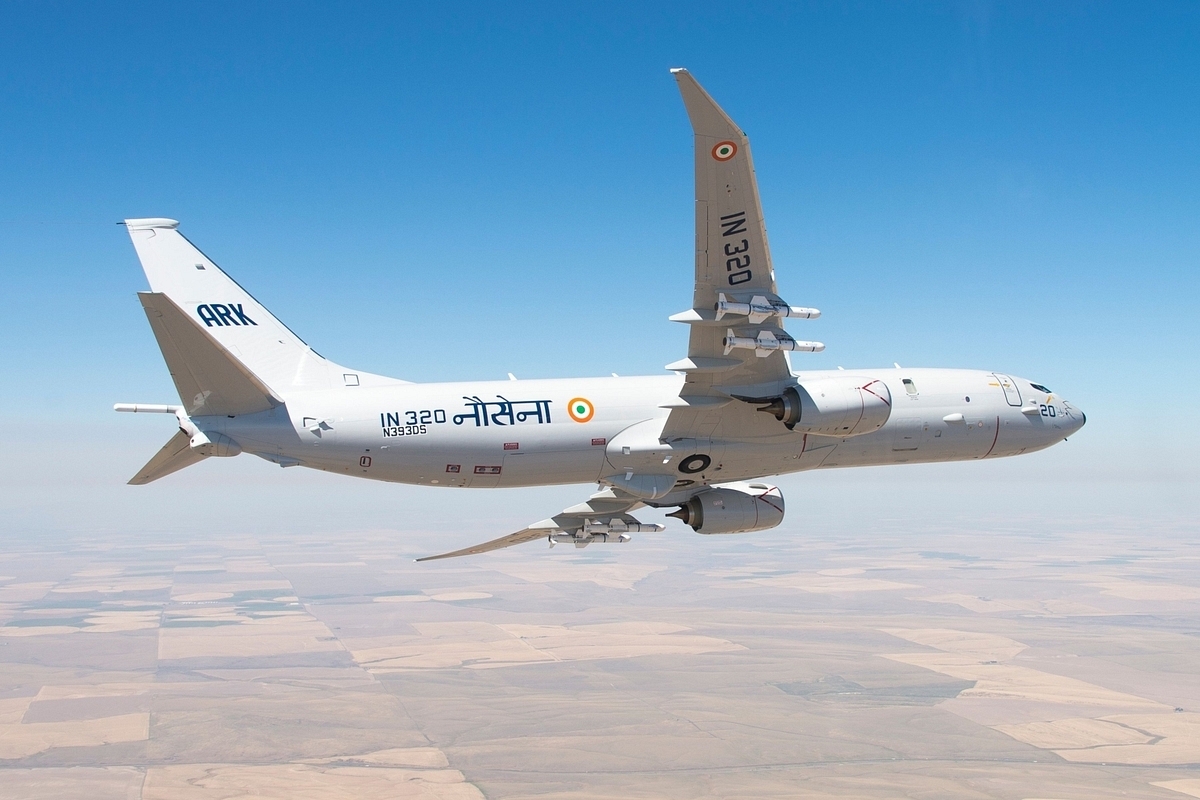Defence
Indian Navy's First P-8I Squadron Logs Over 40,000 Incident-Free Flying Hours As India Eyes Six More Aircrafts

Indian Navy’s P-8I Maritime Patrol Aircraft (Boeing India /Twitter)
Even as the Indian Navy looks to buy six more P-8I Neptune Maritime Surveillance Aircraft, the first squadron of the P-8Is has completed more than 40,000 hours of incident-free flying.
The Indian Navy has first bought these aircraft in 2009 in a deal worth $2.1 billion from the United States. The first aircraft was delivered in 2013.
In 2016, Navy bought another four aircraft, the last of which were delivered to the Navy by the end of 2021.
The first P-8I squadron, 'INAS 312', is based at INS Rajali, located at Arakkonam, Chennai. "The INAS 312 squadron operating P8Is, has clocked 40,000 hours, as the aircraft complete a decade of diverse naval operations," a Navy official said.
"INAS 312, popularly known as 'Albatross', has been at the forefront of all naval operations. The P8I, over the last 10 years, has spearheaded operations in all three dimensions - air, surface and sub-surface," the Navy officer added.
"The Squadron has been rendering yeoman service, safeguarding national interests being the first responder in the Indian Ocean Region," the officer further said.
The Navy is impressed by the performance of the P-8Is and wants to purchase six additional P-8Is to add its fleet of twelve aircrafts. Earlier, Indian Navy was planning to buy ten aircrafts, however, the number was subsequently cut down to six.
The P-8Is have been the workhorse of Indian Navy for maritime surveillance, humanitarian and ASW operations.
The services of these aircrafts were also used by the Army for monitoring Chinese deployment along the Line-of Actual Control (LAC) during standoffs in Ladakh and Doklam.
The P-8Is were also put to use “to keep an eye on the movement of Pakistani troops after the Pulwama terror attack”.
The P-8Is come equipped with the AN/APY-10 radar, which its maker Raytheon describes as a “maritime, littoral and overland surveillance radar”. As it is clear from the description, the radar can be used to monitor ground movement, and is capable of providing data in all-weather conditions, both at night and day.
In the Synthetic Aperture and Inverse synthetic-aperture mode, the AN/APY-10 radar can penetrate through clouds and foliage to give detailed images of the surface below. Images produced by the radar in these modes can give details such as the size of objects and structures on the surface, movement and change.
Support Swarajya's 50 Ground Reports Project & Sponsor A Story
Every general election Swarajya does a 50 ground reports project.
Aimed only at serious readers and those who appreciate the nuances of political undercurrents, the project provides a sense of India's electoral landscape. As you know, these reports are produced after considerable investment of travel, time and effort on the ground.
This time too we've kicked off the project in style and have covered over 30 constituencies already. If you're someone who appreciates such work and have enjoyed our coverage please consider sponsoring a ground report for just Rs 2999 to Rs 19,999 - it goes a long way in helping us produce more quality reportage.
You can also back this project by becoming a subscriber for as little as Rs 999 - so do click on this links and choose a plan that suits you and back us.
Click below to contribute.
Latest